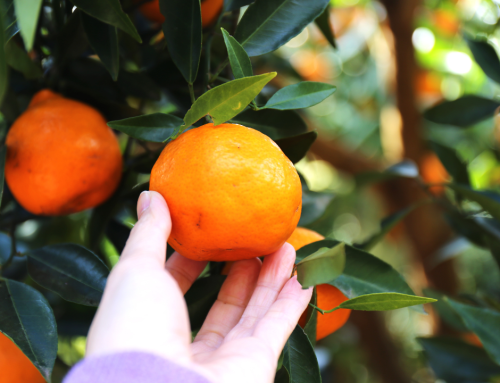After harvest fruit fly hygiene
Fruit left over on trees or on the ground after harvest are especially susceptible to fruit fl y attack. When most fruit is harvested, local fruit fly populations remain in the orchard for a week or two before moving on to another site with ripe or ripening fruit. These fruit flies are desperate to lay eggs as most of their host fruit has been removed during harvest. Any fruit left, even if on the ground, will be a target for infestation by remaining fruit flies. It is essential to undertake post harvest hygiene strategies to help prevent fruit fly problems next season.
Fruit fly hygiene strategies for commercial growers:
• There are Government (i.e. the Australian Pesticide and Veterinary Medicines Authority, APVMA) approved permits available, along with strict usage, animal feeding and orchard re-entry restrictions for applying pesticides (e.g. dimethoate) to after harvest hanging fruit and on-ground fruit to reduce fruit fl y survival;
• Raking on-ground fruit out from the base of trees and into open rows between trees, as well as removing hanging fruit and running over them with a slasher will open the fruit up and expose them to rapid rot, desiccation and solarisation will reduce fruit fl y survival;
• Fruit can be removed from trees and picked up and fed through an industrial mulcher. Mulched fruit then should be either solarised in plastic bags or spread out to rot away or dry out;
• Fruit burial can work but there are limitations. The pit has to be very deep and a layer of soil must be placed on top of the pile of fruit at least every couple of days and compacted. There should be at least 50cm of soil above the fruit. However, if the soil is clayey and cracks readily when dry, deep burial of fruit should not be carried out. If the covering soil is sufficient to preclude adult fruit fl y emergence, fruit rots away underneath and produces carbon dioxide which kills fruit fly eggs, larvae and pupae;
• Cattle and sheep are also very good at cleaning up fallen fruit, especially after leaves have fallen from deciduous crops but they do not impact on any larvae and pupae that have left their host fruit and pupated in the soil;
• Fruit stripping and plant removal — if you do not want fruit and/or fruiting plants strip them off their trees or vines or remove the whole plant. There are often fruiting trees planted near the house and growing near creek banks and roadsides that also need to be addressed.




